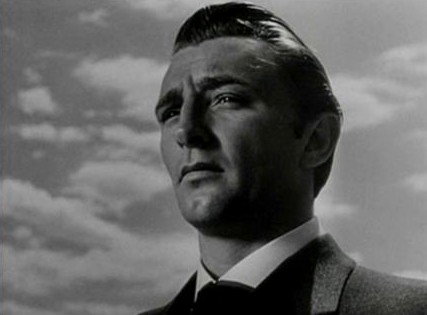
Niven Busch was a crucial figure in the development of the Western after World War Two. He was a New York magazine writer before moving to Hollywood in the 1930s to work as a story editor and screenwriter. He supplied stories or wrote scripts for a variety of genres, including two conventional Westerns, The Westerner, for William Wyler, co-written with Jo Swerling, and Belle Starr, on which he had a co-story credit.
In the early Forties, Busch began writing novels — his second, Duel In the Sun, set in the Old West, was a bestseller and became the basis for David Selznick's notorious film of the same title. This was the film that began to change the nature of the post-WWII Western. Its adult sexuality, which caused it serious problems with the Breen office, its dark Gothic tone and its neurotic or twisted characters marked it as new kind of Western — one more in keeping with the noirish mood of the nation after WWII and Hiroshima.

Busch's own script for Duel In the Sun was discarded, but he was soon at work on an original Western screenplay, Pursued, which many consider the first true noir Western — that is, a Western which deliberately mirrored the themes and forms of the post-war crime thrillers we would eventually call films noirs. Pursued starred Robert Mitchum, who had made a lot of Westerns but was about to become, with Out Of the Past, a true icon of the classic film noir. Busch himself had recently done the screen adaptation of James M. Cain's noirish thriller The Postman Always Rings Twice.

Pursued was directed by veteran Raoul Walsh, who had made some fine pre-war crime thrillers, like High Sierra. These weren't films noirs, exactly, but they were part of one tradition from which film noir emerged (another being the hard-boiled detective thriller.)

Walsh seems to know, though, that in Pursued he's venturing into new territory. Walsh had a spare, no-frills visual style, but the visual style of Pursued is anything but spare. It's dark and moody, almost expressionistic at times. In High Sierra, Walsh's style has a documentary quality — he's looking at a desperate man colliding with a desperate destiny in an almost clinical way. In Pursued he's trying to get inside the psyche of his haunted protagonist.

Pursued is structured as a series of flashbacks, which wasn't a common device for Westerns but became a very common one in the classic film noir. The Western landscape in Pursued is not a symbol of freedom and redemption, as it is in most Westerns. It has an ominous, threatening aspect — like the urban labyrinth of the film noir.
It's almost as though the neurosis and existential anxiety of the urban noir has infected the Western genre — and in truth I think that's pretty much what happened. The atomic-era crime thriller, what we now call the film noir, was a very popular genre, and Duel In the Sun was a big box-office hit. There was commercial calculation as well as artistic daring in the move to darker and more adult Westerns.

However, for all its importance as a milestone in the development of the post-war Western, Pursued is not a very satisfying film. The noirish elements haven't been fully integrated into a consistent tone — as they would be in the later edgy Westerns Anthony Mann made with Jimmy Stewart. Pursued lurches from mood to mood and style to style, sometimes playing like a standard Western, sometimes like a Gothic romance. Busch's attempt to tell a tale of dark destiny feels mostly contrived, without the psychological persuasiveness of The Furies, for example, based on another of his Western novels. Pursued has its moments of perverse power but is more interesting as a stage stop on the way to the genre-bending Western territory that lay ahead.
